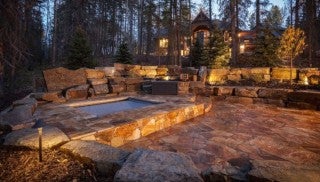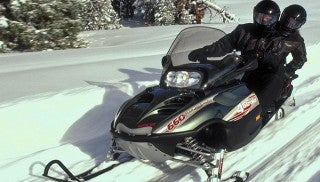Yellowstone restricting number of machines in 08-09

Park reduces sleds allowed to 540 from 720
Fewer snowmobiles will be allowed access to Yellowstone National Park beginning in 2008-09.
The park has released its Winter Use Plans Final Environmental Impact Statement (FEIS) to manage winter use in the park. Yellowstone says the plan is in place to ensure that visitors have a range of appropriate winter recreation opportunities that do not impair or irreparably harm park resources or values.
According to the FEIS, Sylvan Pass will be off limits to motorized vehicles and the maximum number of sleds allowed per day in Yellowstone will be reduced to 540 from 720. However, Yellowstone spokesman Al Nash says that last year the park had an average of 290 snowmobiles per day and that their busiest day saw 542 sleds.
Groups such as the BlueRibbon Coalition are not pleased with the reduction.
“We’re looking long-term here to get some stability in that people know that park’s open,” BlueRibbon Coalition president Jack Welch told Snowmobile.com. “We feel that we need the ability to grow and that is why 720 was an appropriate number.”
Nash says there are environmental reasons for the reduction in sleds.
“Analysis and modeling have shown that reducing snowmobile numbers from 720 to 540 a day is one of several actions we need to take in order to better address resource protection, especially sound impacts, while at the same time being responsive to most access and economic concerns as well as public comment,” Nash told Snowmobile.com.
As has been the case for the past three years, all sleds in Yellowstone must fall under the category of best available technology (BAT). BAT sleds need to meet or exceed sound and emission standards set by the park. Also, all sleds must be accompanied by a commercial guide.
Welch agrees with the requirement of BAT sleds, but he is concerned with the continued need for a commercial guide.
“It limits the flexibility and it does add to the cost quite a bit,” says Welch.
Snowmobilers have long been at odds over the use of sleds at Yellowstone. They have been banned from the park completely at times, so Welch and the BlueRibbon Coalition are pleased that they will be allowed continue riding in Yellowstone.
“This has been an issue for over a decade,” Nash told Snowmobile.com. “There has been vigorous debate on this issue for a long time and I think it’s pretty safe to say that we recognize some individuals and groups may take issue with part or all of this revised alternative.”








 Your Privacy Choices
Your Privacy Choices